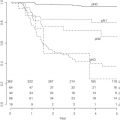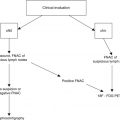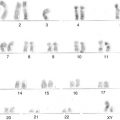Daniel J. Culkin (ed.)Management of Penile Cancer201410.1007/978-1-4939-0461-7_1
© Springer Science+Business Media New York 2014
1. Introduction to the Management of Penile Cancer
(1)
Department of Urology, University of Oklahoma Health Sciences Center, 920 Stanton L. Young Blvd., WP3150, Oklahoma City, OK 73104, USA
Abstract
The diagnosis and management of penile carcinoma presents many challenges. The purpose of this book is to centralize the most current information in an easily accessible source to reduce practice variability in the detection and management of penile cancer. The first part of the book deals with the epidemiology and natural history; the pathology of penile cancer detailing the clinical, morphologic, and outcome features of each tumor type that highlights the pathologic risk factors; the genetic pathologic mechanisms of penile cancer utilizing genetic and proteomic approaches that identify potential genetic and circulating tumor markers; and an overview of prognostic factors for penile cancer. Next, there is a critical review of current and newer imaging techniques for the detection, clinical staging, and surveillance of penile cancer with a critical assessment of their utility in each of these applications.
The diagnosis and management of penile carcinoma presents many challenges. The purpose of this book is to centralize the most current information in an easily accessible source to reduce practice variability in the detection and management of penile cancer. The first part of the book deals with the epidemiology and natural history; the pathology of penile cancer detailing the clinical, morphologic, and outcome features of each tumor type that highlights the pathologic risk factors; the genetic pathologic mechanisms of penile cancer utilizing genetic and proteomic approaches that identify potential genetic and circulating tumor markers; and an overview of prognostic factors for penile cancer. Next, there is a critical review of current and newer imaging techniques for the detection, clinical staging, and surveillance of penile cancer with a critical assessment of their utility in each of these applications.
The next part of the book deals with the treatment of penile cancer with a critical analysis of the results constantly weighing the risks and benefits of these interventions. The diagnosis and management of premalignant penile lesions affords the greatest opportunity to reduce the incidence of penile cancer with excellent cosmetic results with the utilization of more current penile-sparing surgical techniques. These techniques have reduced the burden of older more aggressive extirpative approaches. The first two chapters of this part provide a description of these penile-sparing surgical techniques with a critical review of these results. The surgical treatment of locally advanced penile carcinoma with a personalized approach to the extent of the lymph node dissection is next followed by a critical analysis of the contemporary experience of Netherlands Cancer Institute.
Other interventions that are utilized in the treatment of penile cancer for primary, adjunctive, neo-adjunctive roles include radiotherapy and chemotherapy. The role of radiotherapy along with a discussion and description of techniques, appropriate patient selection, as well as a critical analysis of the results follows. Then an overview of the biologically active agents for penile cancer and their utilities are discussed with a critical analysis of the results.
Penile cancer in the Western world is rare with only a little over 1,500 new cases diagnosed in the USA in 2012. Data complied with such an experience abounds with treatment variability making any conclusion from retrospective analysis doubtful. Attempts at clinical trials have been futile within the USA for these reasons. Where prevalence is high, health systems may suffer from economic constraints and capabilities may not match the demands for prevention, education, and centralization and standardization of care for a malignancy that in some geographic locales represents 20 % of the male cancers.
Stay updated, free articles. Join our Telegram channel

Full access? Get Clinical Tree








